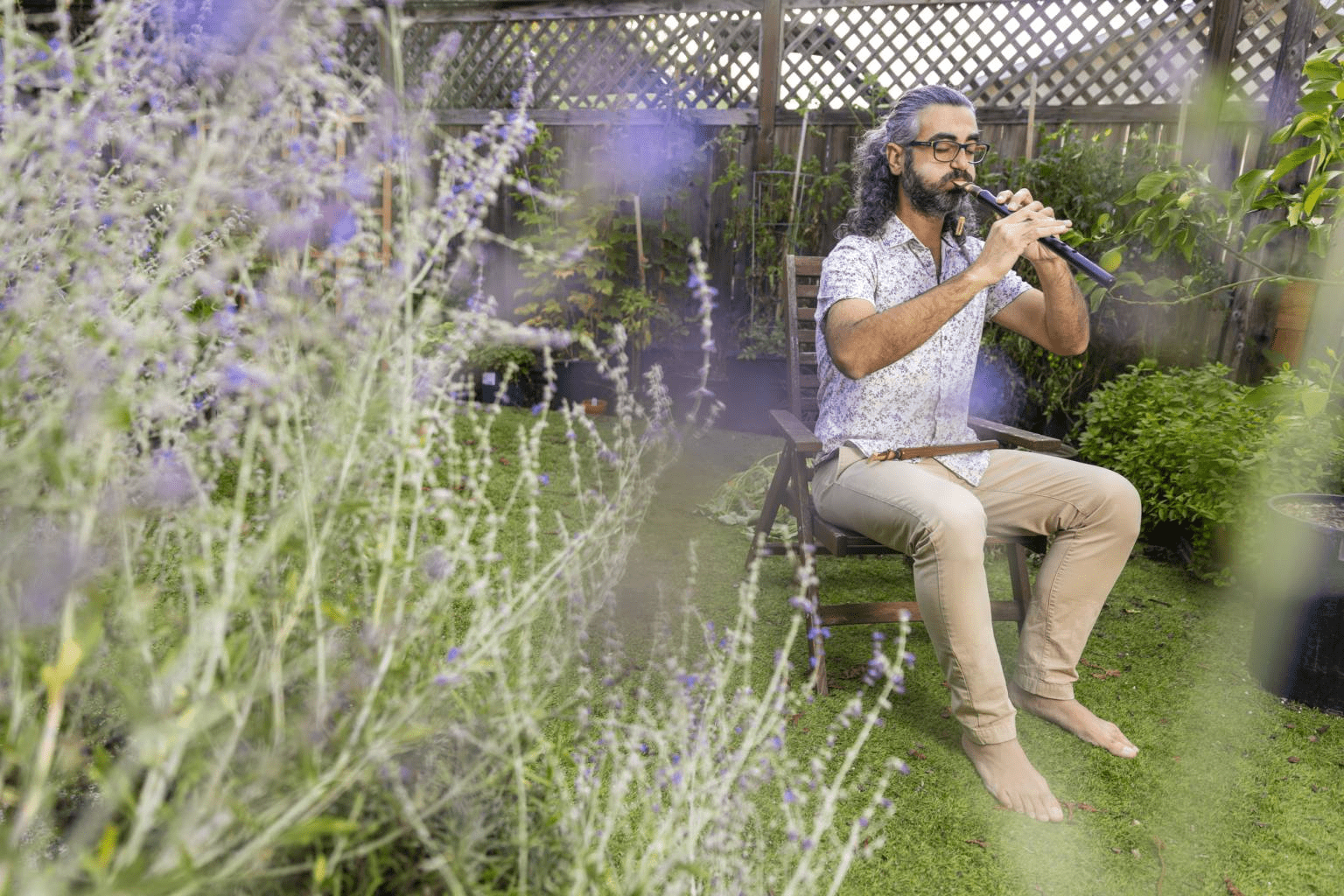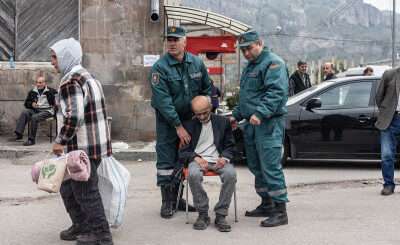Meet the Duduk Whisperer: A Bay Area Armenian Folk Musician Revives Centuries of Soul

Elize ManoukianKQED.comKhatchadour Khatchadourian’s voice is a troubadour’s voice. Round and gentle, the sound seems to emanate from his soul rather than from his chest, filling any room he’s in with warmth.
But even with his mesmerizing voice, the Bay Area musician may be better known for playing an instrument than using his God-given pipes.
To be fair, it’s a really cool instrument: the duduk, an ancient Armenian double reed woodwind carved from apricot wood. The duduk’s melancholy voice is an enduring symbol of Armenia, its plaintive tone said to express the soul and tragedy of the country’s history.
While you might not recognize the name, there’s a good chance you’ve heard the haunting, almost otherworldly sound the duduk makes. This humble shepherd’s flute wandered out of the Armenian countryside and into Hollywood, making cameos on the scores of movies and shows like The Gladiator and The Last Temptation of Christ. The duduk was even recently synthesized on both Dune soundtracks.
Audiences in the Bay Area don’t get many chances to hear the instrument live — unless they’re able to catch Khatchadourian. Those who follow him know him by his Instagram handle: “The Duduk Whisperer.”
“It’s a good marketing gimmick,” he joked, on a recent phone call.
Hollywood reaches for the instrument, time and time again, for many of the same reasons Khatchadourian does. The sounds of the duduk transport you somewhere beyond yourself. “When it hits you, it hits you,” he told KQED. “The duduk takes you to where it wants to go.”
You’ll have to catch him while you can. Save one performance this weekend, Khatchadourian, 39, is taking a break from performing publicly for the time being to focus on crafting his sixth studio album, which he’s calling Breath — a fitting title for a performer whose ability to sing and produce tones with the physically-demanding double reed depends on his lung strength.
The title is also a nod to the technique of breathing to move forward through pain. In his newly-built home studio in Santa Rosa, Khatchadourian is working out how an artist can create in the face of personal and collective hardship — which these days, he said, feels like is all around him.
The album concept took shape in 2023, following the shock and anguish Khatchadourian and Armenians around the world experienced witnessing Azerbaijan’s forced displacement of more than 100,000 Armenians in Nagorno-Karabakh, an enclave within the country that Armenians call “Artsakh.” That dispersal followed a pattern of war, starvation and violence that led Luis Moreno Ocampo, an Argentinian lawyer and former prosecutor for the International Criminal Court, to call the crisis “the Armenian genocide of 2023.”
The events “left a wound in the collective Armenian psyche,” Khatchadourian said. The world’s silence made it all the more painful. That, in relation to the “ethnic cleansing and the ongoing genocide happening to Palestinians in Gaza,” left Khatchadourian temporarily frozen, he said, weighed down by the “heartbreak, the disappointment” of the politics of the moment.
But the musician learned a long time ago how to channel and transmute his pain into music. “My early years on this planet,” he said, “have given me enough psychological material to process through my 30s.”
Khatchadourian was born in Beirut, a Middle Eastern city of myth. While older generations remember a cultural metropolis, known as the Paris of the Middle East, Khatchadourian’s earliest memories are of the Lebanese Civil War.
The brutal conflict, which racked the country from 1975–1991, separated his family. His dad fled to Los Angeles in search of work opportunities, while his mother took then-3-year-old Khatchadour and his sister to Aleppo to live with his paternal grandparents. As a child in Syria, Khatchadourian caught his first glimpse of the duduk in the hands of a young musician who was part of a traveling folk music troupe from Armenia. For the most part, his musical education came in the form of a children’s choir, singing Armenian, Arabic and some English-language music.
Twelve years later, the family reunited in California. The transition to life in a new country was rough, Khatchadourian said, especially for a teenager who had lived through so much turmoil.
During this chapter, he didn’t do “any music for about 10 years, just total silence,” he said.
Hoping to leave the nest and strike out on his own, Khatchadourian moved to the Bay Area to study political science at UC Berkeley. He almost became an academic, researching the Armenian community of Lebanon, which had formed after the 1915 Armenian genocide, and had been fractured by the civil war. But studying his own experience only brought Khatchadourian more darkness.
It was at that point that he discovered the duduk.
“I was suffering … tremendously isolated, and trying to find kind of a meaning within myself, and the duduk spoke to that,” he reflected, before adding, “I wouldn’t say it’s cheaper than therapy.”
This forthcoming album has been the most challenging to produce to date, he said. He’s composed more than 250 hours of original or arranged pieces so far, some formed out of the folk music and other sonic relics from Artsakh and written in the region’s unique Armenian dialect.
Recording the foundations of the album left him feeling raw and emotional, he said. “I was processing the war, and at the same time processing the shifting nature of Armenian identity,” he said. “It shakes quite a bit inside of me every time I hear it.”
One of Khatchadourian’s guides in this wilderness is the 19th century Armenian composer and ethnomusicologist, Komitas Vardapet. Born Soghomon Soghomonian, in what is now western Turkey, Komitas went from village to village collecting Armenian and Kurdish folk songs and traditions and transcribing them into western musical notation. He also composed his own songs, many of which received acclaim beyond his lifetime.
Komitas was said to be on the verge of deciphering khaz, an Armenian musical notation system, when on April 24, 1915, he was rounded up with nearly 300 other Armenian intellectuals to be slaughtered by the Ottoman government, although Turkey continues to deny that a genocide occurred.
While Komitas survived the genocide, thanks in part to intervention from the U.S. Ambassador to the Ottoman Empire Henry Morgenthau, he suffered a mental breakdown, and spent his final years in an asylum. The key to khaz, as well as a vast archive of folk music, was lost. The handful of songs that survived, however, would go on to become the foundation of contemporary Armenian classical music.








